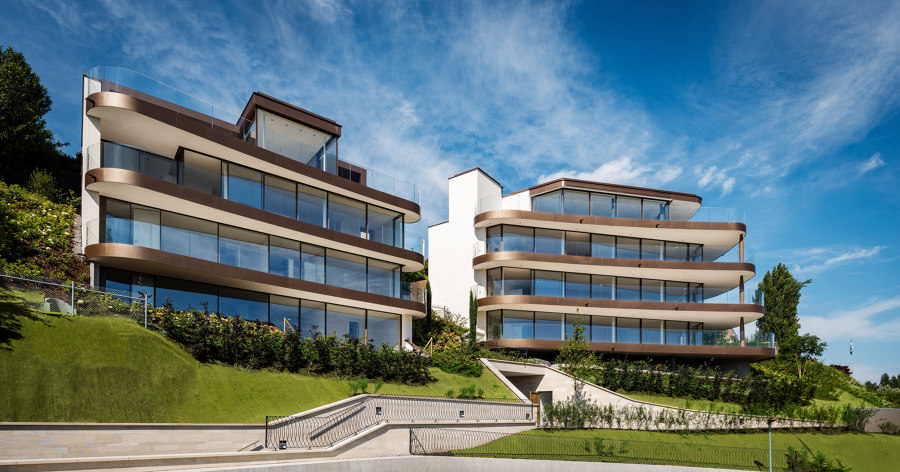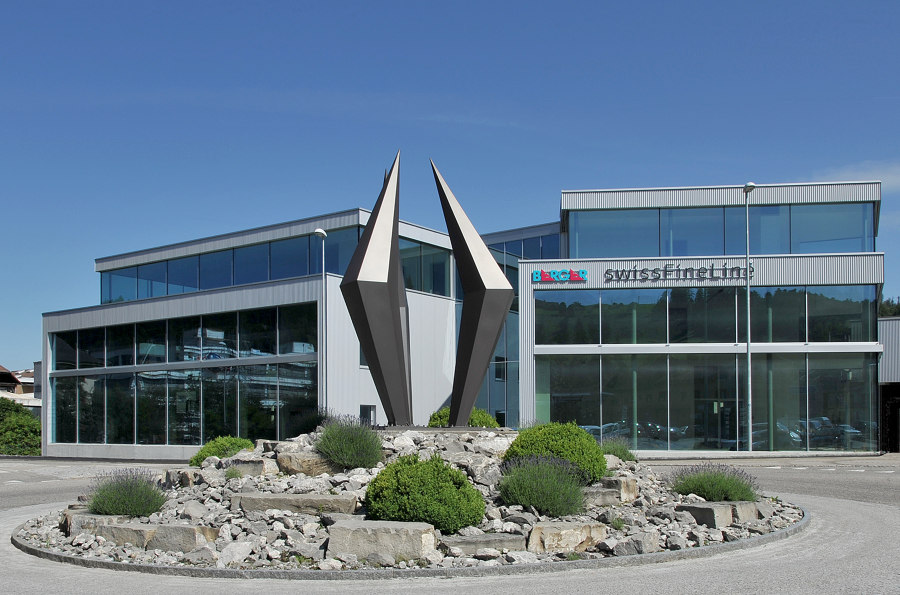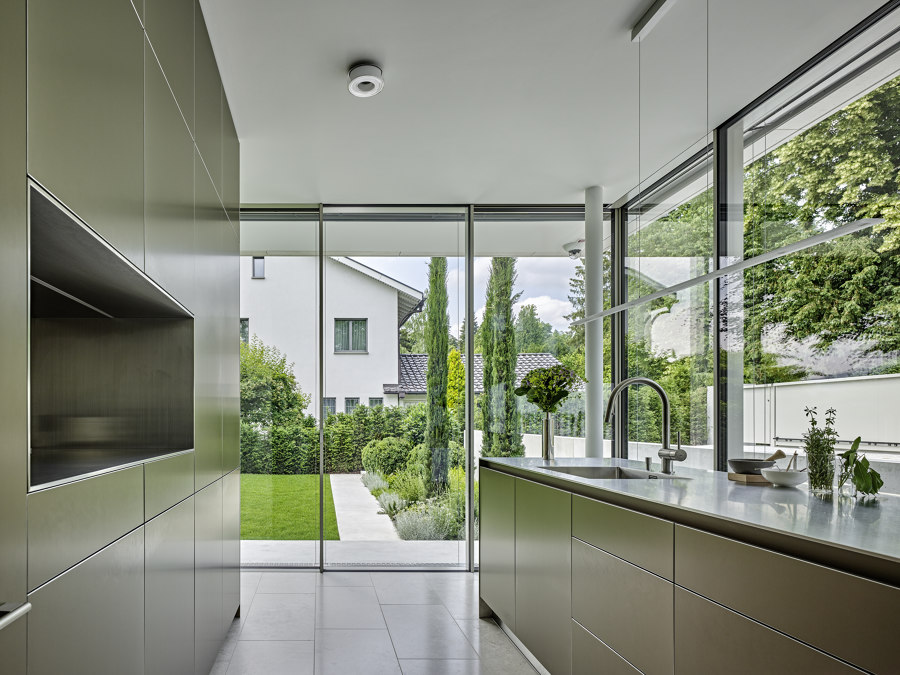I can see clearly now: SwissFineLine
Storia del Marchio di Gerrit Terstiege
Langnau, Svizzera
04.09.19
The Swiss family company SWISSFINELINE specialises in the manufacture of large glass surfaces for windows, doors and railings that allow a view of everything but the structural elements.
Large glass surfaces can become a striking design feature of modern architecture. It is of decisive importance that the constructive elements of large windows and sliding glass doors remain practically invisible
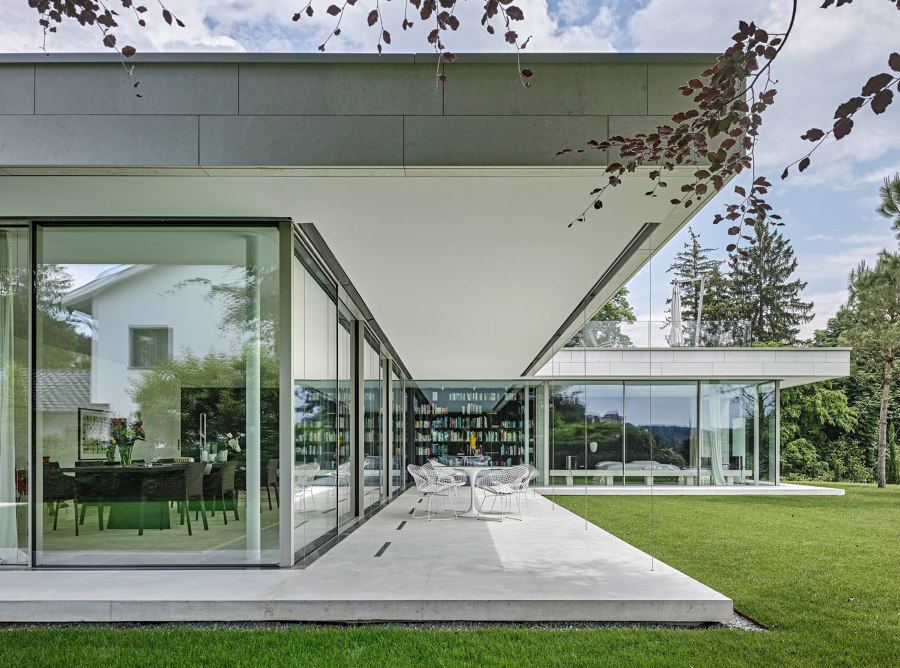
Large glass surfaces can become a striking design feature of modern architecture. It is of decisive importance that the constructive elements of large windows and sliding glass doors remain practically invisible
×There is no doubt that for architects, windows are central design elements whose size and texture have a decisive influence on the overall look of a building. Since the beginning of the modern age, planners have responded to the desire for brighter, more open architecture. In fact, the history of modern architecture could even be explained in terms of the growing importance of ever-larger window areas. And like everything else in architecture, this development also has a history: the famous Farnsworth House by Mies van der Rohe is one of the earliest embodiments of modernism that accord to glass the role of a design element with great creative power.
Planned as a weekend residence for Edith Farnsworth, a doctor, and completed in 1951, the one-roomed house stands in a wooded park in Plano, Illinois, and is today a site of pilgrimage for modern architecture. Here the view of the countryside is truly remarkable – but equally remarkable is the view through the large windows into the interior of the well thought-out house. For the former Bauhaus director, his minimalist design in glass and steel was a major step and a landmark in his oeuvre: "This house is much more important than its size or cost would suggest. It is a prototype for all glass buildings," commented Mies van der Rohe in retrospect.
The better the view from a building, the more sensible it is not to block it with walls. Glass surfaces that extend from floor to ceiling bring the landscape surrounding a building into the building, so to speak
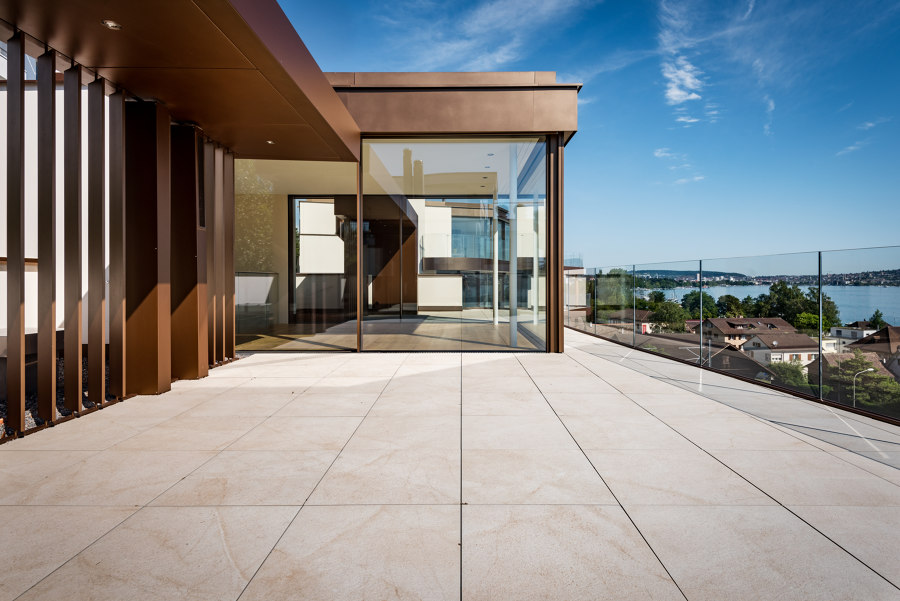
The better the view from a building, the more sensible it is not to block it with walls. Glass surfaces that extend from floor to ceiling bring the landscape surrounding a building into the building, so to speak
×The firm of swissFineLine in Langnau near Bern is dedicated to making large glass surfaces possible, for example as windows, doors and parapets. Located in Switzerland's Emmental region since 1886 and managed throughout by the Berger family, swissFineLine today enjoys an excellent reputation among architects – particularly on an international level. In recent decades, the former forge has developed into a successful window manufacturing company with around 50 employees, and is now managed into its fourth generation by brothers Kurt and Hansrudolf Berger: "We are a family business and vouch with our name for the highest quality in production, consulting and service. We regard ourselves as partners to architects and property owners, and always have the goal of actively supporting them in the implementation of their ideas and getting the best out of every project."
Above: The swissFineLine headquarters in Langnau near Bern. The company has been based in the Swiss Emmental region since 1886 and has been managed by the Berger family ever since. Below: View of the production hall
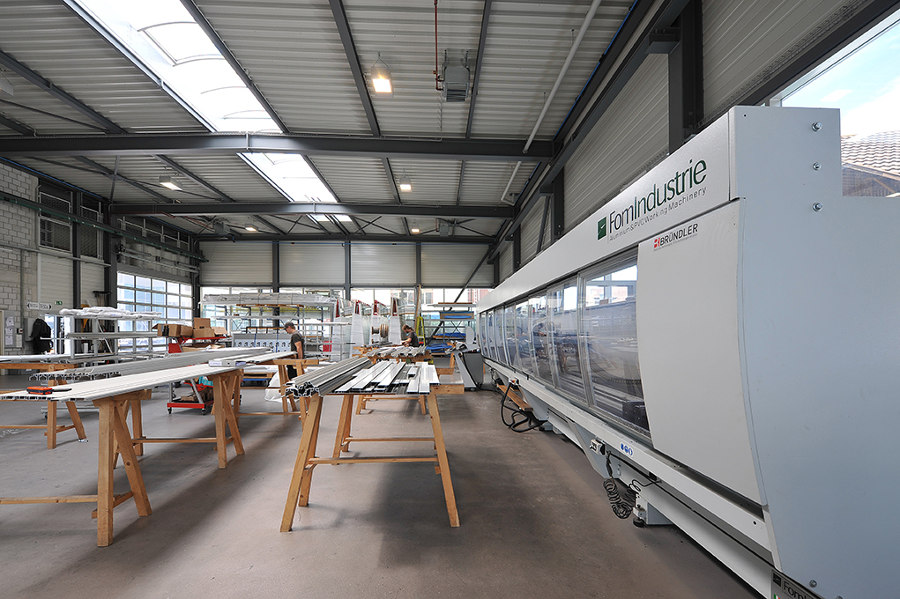
Above: The swissFineLine headquarters in Langnau near Bern. The company has been based in the Swiss Emmental region since 1886 and has been managed by the Berger family ever since. Below: View of the production hall
×The Berger brothers and their team’s many years of experience in the production of large glass elements is decisive, because details and processing quality are crucially important here. In the case of the latter, swissFineLine enjoys certification from both domestic and international institutes. The company is committed to one goal: making the beauty of the landscape that surrounds a building as visible as possible while making everything that is technically required for this purpose disappear as much as possible.
It could also be expressed like this: the people at swissFineLine are not satisfied until the technical features of the construction of large glass surfaces are virtually invisible, and yet everything still functions perfectly. The great art here is to reduce to a minimum all the elements which make a large sliding window a safe, flexible and attractive design element. Or, to put it in the famous three words of Mies van der Rohe: "Less is more": more view, more insight, more elegance in the overall composition of the building.
"Less is more": Since the beginning of modernism, planners have taken into account the desire for brighter, more open architecture. One could even explain the history of modern architecture in terms of the growing importance of ever larger window areas
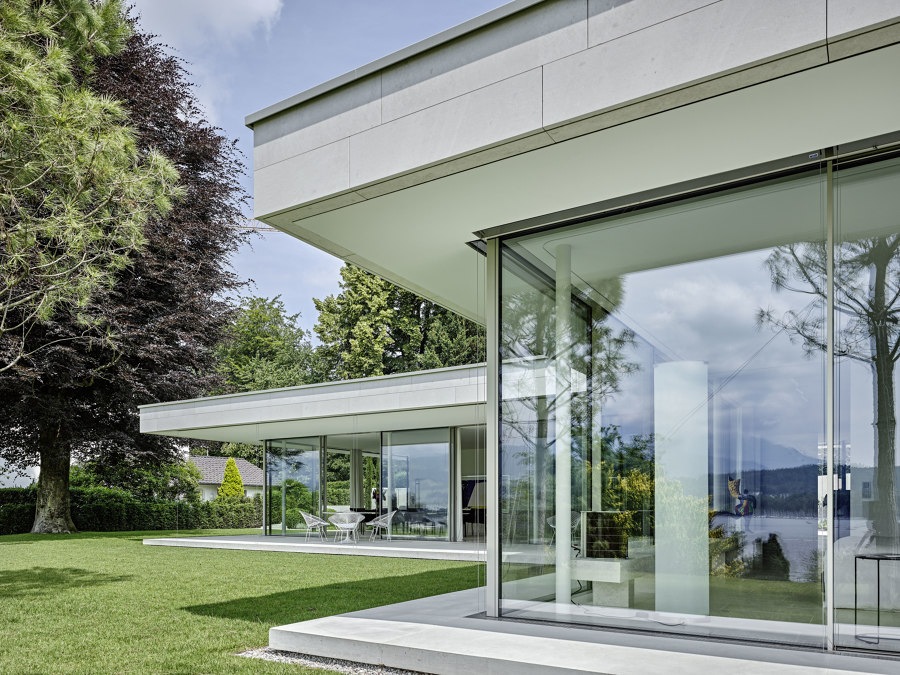
"Less is more": Since the beginning of modernism, planners have taken into account the desire for brighter, more open architecture. One could even explain the history of modern architecture in terms of the growing importance of ever larger window areas
×The reference architectural projects with impressive glass surfaces presented on the www.swissfineline.ch website speak for themselves. Here, exciting dialogues emerge between exposed concrete and glass, between the colour properties of a building material and the transparency of the windows, between the interior and the exterior. Windows and sliding doors reaching from floor to ceiling without thresholds bring nature into the living areas and convey a unique feeling of space.
Glass element dimensions of over 20 square metres are possible, with sliding windows weighing up to 1200 kg being controlled automatically and moved almost silently. Anyone interested and particularly those with a building project can download a comprehensive 28-page brochure that provides information and inspiration from the website. After registering on the website, architects and planners in turn have access to a detailed CAD catalogue which contains technical documentation and even tenders - and can thus become an important tool for them.
© Architonic


